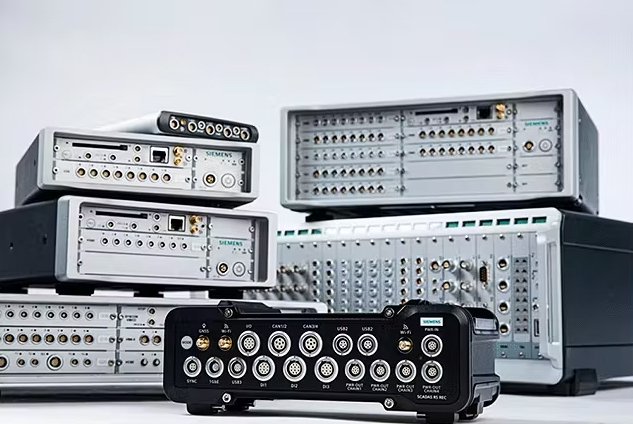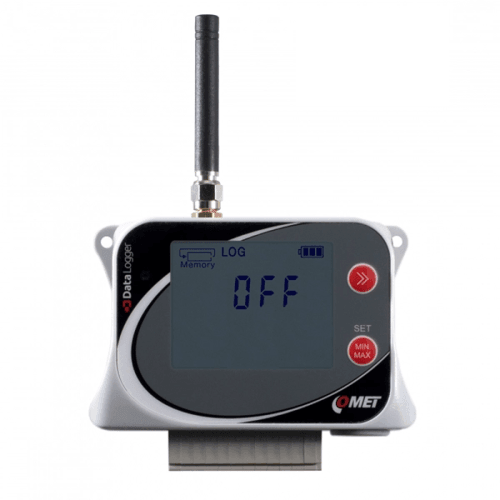The technology behind predictive maintenance
Welcome to our exploration of the fascinating world of predictive maintenance. In this blog article, we’re diving into the technological backbone that makes predictive maintenance not just a possibility, but a game-changer in various industries. We’ll unravel the intricate details of the hardware and software components that are essential for implementing predictive maintenance effectively. Whether you’re a professional in the field, a curious learner, or someone interested in the intersection of technology and industry, this video will provide valuable insights into how predictive maintenance works and why it’s becoming increasingly important in our tech-driven world. So, let’s get started and uncover the technology behind predictive maintenance!
Predictive maintenance is a revolutionary approach that is transforming how industries manage equipment and machinery maintenance. Unlike traditional maintenance methods that rely on scheduled or reactive measures, predictive maintenance utilizes real-time data and advanced analytics to predict when maintenance should be performed. This proactive approach is based on the actual condition of the equipment, rather than predetermined schedules or unexpected breakdowns.
The primary goal of predictive maintenance is to anticipate potential failures before they occur, thereby reducing downtime, extending equipment life, and optimizing maintenance resources. This is achieved by continuously monitoring the condition and performance of equipment through various sensors and data collection methods. The collected data is then analyzed to identify patterns and anomalies that could indicate potential issues or failures.
Industries such as manufacturing, aviation, energy, and transportation are increasingly adopting predictive maintenance. In these sectors, equipment downtime can lead to significant financial losses and safety risks. By implementing predictive maintenance, companies can not only save costs but also enhance operational efficiency and safety.
The effectiveness of predictive maintenance hinges on the seamless integration of both hardware and software components. The hardware is responsible for collecting and transmitting critical data, while the software plays a crucial role in analyzing this data and providing actionable insights. Together, they form the foundation of a predictive maintenance system that can significantly improve maintenance strategies and outcomes.
Hardware Components in Predictive Maintenance
Sensors
Sensors are the cornerstone of any predictive maintenance system. They act as the eyes and ears of machinery, continuously monitoring various parameters that indicate the equipment’s health. Here are the key aspects of sensors in predictive maintenance:
Types of Sensors : There are several types of sensors used in predictive maintenance, each designed to monitor specific aspects of machinery. Common types include the following:
- Vibration Sensors: These sensors detect abnormal vibrations in machinery, which can indicate issues like misalignment or imbalance.
- Temperature Sensors: These are used to monitor the temperature of equipment. Overheating can be a sign of friction, wear, or electrical issues.
- Pressure Sensors: These sensors measure the pressure within systems, which is crucial in industries like oil and gas or hydraulics.
- Acoustic Sensors: These can detect changes in noise levels, which might indicate leaks, cracks, or other mechanical failures.
- Ultrasonic Sensors: These are used for detecting flaws or changes in material properties.
Role in Data Collection
Sensors continuously collect data from equipment during operation. This data can include readings on temperature, pressure, vibration, and more, depending on the type of sensor used. The frequency and accuracy of data collection are crucial for effective predictive maintenance.
Monitoring and Early Warning
The primary function of sensors is to provide real-time monitoring of equipment. They can detect even the slightest changes in performance, which might be indicative of a developing problem. This early warning capability is essential for taking preemptive action before a minor issue turns into a major failure.
Durability and Reliability
Sensors used in predictive maintenance need to be durable and reliable, especially in harsh industrial environments. They should be able to withstand extreme temperatures, pressures, and other challenging conditions while providing accurate data.
Sensors are an indispensable part of the hardware setup in predictive maintenance. Their ability to provide detailed and real-time data about equipment health is what enables predictive maintenance systems to anticipate and prevent potential failures, ensuring smoother and more efficient operations.
Data Acquisition Systems
Data acquisition systems play a pivotal role in predictive maintenance by serving as the bridge between the raw data collected by sensors and the analysis that leads to maintenance decisions. Here are the key aspects of data acquisition systems in predictive maintenance:
- Data Collection and Transmission: Data acquisition systems are responsible for collecting the data from various sensors attached to the equipment. They not only gather this data but also format and transmit it for further analysis. This involves converting sensor signals, which are often analog, into digital data that can be processed by computers.
- Real-Time Data Acquisition: One of the critical features of these systems is the ability to acquire data in real time. This means that as soon as a sensor detects a change or anomaly, the data acquisition system captures and processes this information instantly. Real-time data is crucial for timely decision-making in predictive maintenance.
- Integration with Multiple Sensors: In complex machinery, multiple sensors measuring different parameters are often used. Data acquisition systems are designed to integrate inputs from these various sensors, providing a comprehensive view of the equipment’s condition.
- Data Quality and Filtering: These systems also play a role in ensuring the quality of the data. They can filter out noise or irrelevant data, ensuring that only meaningful and accurate information is passed on for analysis. This is important for preventing false alarms and ensuring the reliability of predictive maintenance decisions.
- Scalability and Flexibility: Data acquisition systems in predictive maintenance need to be scalable to accommodate additional sensors or equipment. They should also be flexible enough to adapt to different types of machinery and varying data collection requirements.
Data acquisition systems are a critical hardware component in predictive maintenance. They ensure that the data collected by sensors is accurately and promptly captured, transmitted, and prepared for analysis. Without effective data acquisition systems, the ability to predict and prevent equipment failures would be significantly hindered.
Connectivity Devices
Connectivity devices are essential in predictive maintenance for ensuring the seamless transmission of data from the machinery to the analysis systems. Here are the key aspects of connectivity devices in predictive maintenance:
Role in Data Transmission: Connectivity devices are responsible for transmitting the data collected by sensors and processed by data acquisition systems to the central analysis software or cloud storage. This transmission can occur over various mediums, including wired networks, Wi-Fi, or cellular networks.
Internet of Things (IoT) Integration: Many predictive maintenance systems leverage the Internet of Things (IoT) to enhance connectivity. IoT devices can communicate with each other and with central systems, creating a network of interconnected devices that share data in real-time.
Network Reliability and Security: It’s crucial that connectivity devices provide a reliable and secure network for data transmission. Any interruption in connectivity can lead to delays in data analysis and potentially missed maintenance opportunities. Additionally, the data transmitted often contains sensitive information, making security a top priority to prevent unauthorized access or cyber attacks.
Wireless and Remote Monitoring: In many cases, connectivity devices enable wireless and remote monitoring of equipment. This is particularly useful in hard-to-reach or hazardous environments. It allows for continuous monitoring without the need for physical proximity, enhancing safety and efficiency.
Edge Computing Capabilities: Some connectivity devices come equipped with edge computing capabilities. This means they can process and analyze data at the source, reducing the need for constant data transmission to a central system. This can lead to faster response times and reduced network load.
In conclusion, connectivity devices are a vital hardware component in predictive maintenance systems. They ensure that the data flow from the machinery to the analysis systems is uninterrupted, secure, and efficient. By enabling reliable and real-time data transmission, these devices play a crucial role in the effectiveness of predictive maintenance strategies.
Software Components in Predictive Maintenance
Data Analytics Software
Data analytics software is the brain of predictive maintenance systems, turning raw data into actionable insights. Here are the key aspects of data analytics software in predictive maintenance, with insights into how XMPro addresses each:
- Data Analysis and Pattern Recognition: The primary function of data analytics software is to analyze the vast amounts of data collected from various sensors and equipment. It identifies patterns, trends, and anomalies that might indicate potential issues or impending failures. XMPro excels in this area, effectively analyzing data to pinpoint potential problems.
- Machine Learning and AI Algorithms: Advanced data analytics software often employs machine learning and artificial intelligence algorithms. These algorithms can learn from historical data, improve over time, and make increasingly accurate predictions about equipment maintenance needs. XMPro utilizes these advanced algorithms to enhance its predictive capabilities.
- Visualization Tools: Data analytics software typically includes visualization tools that present data in an easily understandable format. Dashboards, graphs, and heat maps help maintenance teams quickly grasp the condition of equipment and make informed decisions. XMPro offers such visualization tools, aiding in the clear presentation of data.
- Predictive Alerts and Notifications: One of the critical features of this software is its ability to provide predictive alerts and notifications. When potential issues are detected, the software can alert maintenance personnel, allowing them to take preemptive action before a failure occurs. XMPro incorporates this feature, ensuring timely alerts and notifications.
- Integration with Other Systems: Effective data analytics software can integrate with other systems such as Enterprise Resource Planning (ERP) and Computerized Maintenance Management Systems (CMMS). This integration allows for a more holistic approach to maintenance management. XMPro supports such integrations, enhancing its effectiveness in maintenance strategies.
- Customization and Scalability: Different industries and equipment types may have unique requirements. Therefore, data analytics software in predictive maintenance should be customizable to meet specific needs. It should also be scalable to accommodate growing data volumes and additional equipment. XMPro is designed with both customization and scalability in mind, catering to diverse industry needs.
Data analytics software is a crucial component of predictive maintenance. It provides the intelligence needed to interpret data accurately, predict potential failures, and guide maintenance decisions. By leveraging advanced algorithms and providing intuitive visualizations, software like XMPro plays a pivotal role in transforming raw data into meaningful insights that drive predictive maintenance strategies.
Predictive Modelling
Predictive modeling is a fundamental software component in predictive maintenance, enabling the prediction of future equipment failures based on historical and real-time data. XMPro, as an example of such software, addresses these key aspects:
- Creation of Predictive Models: Predictive modeling involves developing mathematical models that can forecast potential equipment failures. These models are created using historical data, which includes records of past failures, maintenance activities, and operational conditions. XMPro excels in creating these predictive models, utilizing comprehensive historical data for accuracy.
- Use of Historical and Real-Time Data: Predictive models utilize both historical data and real-time data from sensors. The historical data helps in understanding past trends and failure patterns, while real-time data provides current insights into equipment condition. XMPro effectively combines both data types to enhance prediction quality.
- Machine Learning Techniques: Many predictive models employ machine learning techniques, which allow the models to learn from data, identify patterns, and improve their predictions over time. Techniques such as regression analysis, classification, and neural networks are commonly used. XMPro incorporates these advanced machine learning techniques to refine its predictive models.
- Accuracy and Reliability: The effectiveness of predictive maintenance heavily relies on the accuracy and reliability of predictive models. The models must be rigorously tested and validated to ensure they can provide trustworthy predictions. XMPro prioritizes the accuracy and reliability of its predictive models, ensuring they meet high standards.
- Continuous Improvement and Updating: Predictive models are not static; they need to be continuously updated and refined as more data becomes available. This ongoing improvement helps in adapting to changes in equipment behavior and operational conditions. XMPro supports this continuous improvement, constantly refining its models with new data.
- Customization for Specific Equipment: Different types of equipment may have unique operational characteristics and failure modes. Therefore, predictive models often need to be customized for specific equipment types to ensure accurate predictions. XMPro offers customization options to cater to different equipment types and operational nuances.
- Integration with Maintenance Schedules: Predictive models are often integrated with maintenance management software to ensure that the predictions are effectively translated into maintenance actions and schedules. XMPro seamlessly integrates with maintenance schedules, ensuring that its predictions lead to timely and effective maintenance actions.
Predictive modeling is a critical software component in predictive maintenance. It provides the capability to forecast equipment failures, allowing maintenance teams to act proactively. The accuracy, reliability, and continuous improvement of these models, as exemplified by XMPro, are essential for the success of predictive maintenance programs.
Maintenance Management Software
Maintenance management software is a vital software component in predictive maintenance, serving as the operational hub for managing and implementing maintenance activities. XMPro, as an example of such software, addresses these key aspects:
- Integration of Predictive Maintenance Data: This software integrates the insights and predictions derived from data analytics and predictive modeling. XMPro excels in translating these insights into actionable maintenance tasks, ensuring that the predictions lead to effective maintenance actions.
- Scheduling and Planning: Maintenance management software facilitates the scheduling and planning of maintenance activities. XMPro helps in prioritizing tasks based on the urgency and importance of the predicted maintenance needs, ensuring optimal allocation of resources and minimizing downtime.
- Work Order Management: The software streamlines the creation, assignment, and tracking of work orders. When a predictive model, like those in XMPro, indicates a potential issue, the software can automatically generate a work order, assign it to the appropriate personnel, and track its progress.
- Inventory and Spare Parts Management: Effective maintenance often requires the availability of spare parts and tools. XMPro aids in managing inventory, ensuring that necessary parts are available when needed for predictive maintenance tasks.
- Record Keeping and Documentation: The software maintains comprehensive records of all maintenance activities, including predictive maintenance tasks. XMPro’s documentation capabilities are crucial for tracking the effectiveness of maintenance strategies, compliance with regulations, and future decision-making.
- Performance Analysis and Reporting: Maintenance management software often includes tools for analyzing maintenance performance and generating reports. XMPro provides reports that can offer insights into the effectiveness of the predictive maintenance program, areas for improvement, and cost savings achieved.
- User-Friendly Interface and Accessibility: A user-friendly interface is essential for efficient use of the software. Additionally, the software should be accessible on various devices, including computers, tablets, and smartphones. XMPro ensures ease of use and accessibility, allowing maintenance teams to access information and manage tasks on the go.
Maintenance management software is an indispensable component in predictive maintenance. It serves as the operational platform that turns predictive insights into organized and effective maintenance actions. By streamlining scheduling, work order management, inventory control, and performance analysis, software like XMPro plays a pivotal role in the successful implementation and management of predictive maintenance strategies.
Integration of Hardware & Software
The integration of hardware and software components is crucial for the success of predictive maintenance systems. XMPro exemplifies how these components work together to create a cohesive and effective predictive maintenance strategy.
- Seamless Data Flow: The foundation of successful predictive maintenance lies in the seamless flow of data from hardware components like sensors and connectivity devices to software components such as data analytics and maintenance management systems. XMPro ensures this uninterrupted flow, enabling accurate data collection, transmission, analysis, and action.
- Real-Time Monitoring and Analysis: The integration allows for real-time monitoring of equipment and immediate analysis of data. Sensors collect data, which is then transmitted through connectivity devices to data analytics software like XMPro. This software analyzes the data in real-time, providing timely insights for maintenance decisions.
- Predictive Alerts and Maintenance Actions: When the data analytics software, such as XMPro, identifies a potential issue, it triggers predictive alerts. These alerts are integrated with maintenance management software, which then generates and schedules maintenance tasks. XMPro ensures that predictive insights lead to prompt and organized maintenance actions.
- Feedback Loop for Continuous Improvement: The integration of hardware and software creates a feedback loop. Data from completed maintenance tasks is fed back into the system, allowing for continuous improvement of predictive models and maintenance strategies. XMPro leverages this feedback loop for adapting to changing conditions and improving the accuracy of predictions.
- Customization and Scalability: Effective integration, as seen in XMPro, allows for customization to meet specific industry or equipment needs. It also ensures scalability, enabling the predictive maintenance system to grow and adapt as more equipment is added or as operational requirements change.
- User Interface and Accessibility: The integration provides a user-friendly interface that consolidates information from various sources. XMPro offers an interface that is accessible to maintenance teams, allowing them to easily understand and act on the information provided by the system.
- Challenges and Solutions: Integrating hardware and software components can present challenges such as compatibility issues, data overload, and cybersecurity concerns. XMPro addresses these challenges through careful planning, selection of compatible and secure systems, and effective data management strategies.
The integration of PdM hardware and PdM software is a critical aspect of predictive maintenance. It ensures that each component works harmoniously to provide a comprehensive and effective maintenance solution. Software like XMPro is key to transforming raw data into actionable maintenance strategies, ultimately enhancing the efficiency and reliability of maintenance programs.
Challenges & Considerations
While predictive maintenance offers numerous benefits, implementing such a system comes with its own set of challenges and considerations. Addressing these effectively, as XMPro demonstrates, is crucial for the successful adoption and operation of predictive maintenance strategies.
- Data Privacy and Security: With the increasing amount of data being collected and transmitted, data privacy and security become paramount. XMPro prioritizes protecting sensitive information from cyber threats and ensures compliance with data protection regulations, addressing these critical challenges.
- System Compatibility and Integration: Integrating new predictive maintenance technologies with existing systems can be challenging. XMPro is designed to minimize compatibility issues, offering careful planning and seamless integration capabilities, even with legacy systems.
- Cost and Return on Investment (ROI): Implementing predictive maintenance can be costly, especially for small and medium-sized enterprises. XMPro helps organizations carefully consider the initial investment and ongoing costs against the potential ROI, which includes reduced downtime, extended equipment life, and improved efficiency.
- Skill Gaps and Training: The successful implementation of predictive maintenance often requires specialized skills. XMPro provides support and resources to bridge skill gaps, and its user-friendly interface reduces the need for extensive training.
- Data Overload and Analysis Paralysis: The vast amount of data generated by predictive maintenance systems can lead to data overload. XMPro offers strategies to manage, filter, and prioritize data, avoiding analysis paralysis and ensuring actionable insights.
- Reliability and False Positives: Ensuring the reliability of predictive maintenance systems is crucial. XMPro focuses on reducing false positives, ensuring that the system’s predictions are trustworthy and lead to necessary maintenance actions.
- Customization and Scalability: Predictive maintenance systems need to be customized to specific industry and equipment requirements. XMPro is both customizable and scalable, accommodating future growth and changes in the operational environment.
- Cultural and Organizational Change: Adopting predictive maintenance often requires a cultural shift within an organization. XMPro supports this transition, offering change management strategies to move from reactive or scheduled maintenance to a predictive approach.
While predictive maintenance offers significant advantages, it’s important to carefully consider and address the various challenges and considerations. Software like XMPro plays a pivotal role in ensuring a smooth transition and maximizes the benefits of predictive maintenance for the organization.
Conclusion
In conclusion, predictive maintenance represents a transformative approach in equipment management, offering substantial benefits in efficiency, cost savings, and equipment longevity. Implementing this strategy, however, requires careful consideration of various factors, from data security to system integration. Software solutions like XMPro play a crucial role in addressing these challenges, offering seamless integration, data management, and user-friendly interfaces. By effectively leveraging such advanced tools, organizations can not only overcome the hurdles associated with predictive maintenance but also fully harness its potential, leading to a more proactive, data-driven, and efficient maintenance landscape.




















